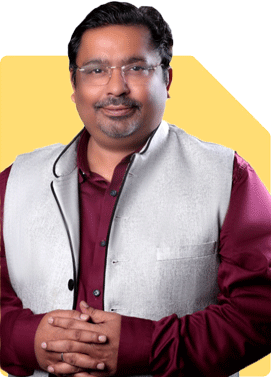Is My Current Investment Portfolio Good? (Started Sep 2023)
Ramalingam Kalirajan |10902 Answers |Ask -Follow
Mutual Funds, Financial Planning Expert - Answered on Nov 18, 2024
He has an MBA in finance from the University of Madras and is a certified financial planner.
He is the director and chief financial planner at Holistic Investment, a Chennai-based firm that offers financial planning and wealth management advice.... more

Please suggest if following investment are good as SIP started last year sep 2023 HDFC Flexi cap 5000, Parag Parikh 5000,SBI L & Mid cap 2500/-, Axis Blue chip fund 2500, AXis Mid cap fund 2500/- HDFC mid-cap opportunities fund 5000, Kotal emerging fund 2500/- Nippon India smal cap fund 5000/- HDFC Pharma & healthcare fund 4000/- Nippon India multicap fund 2500/- HSBC value fund 3000/- Investment are on monthly basis. Pease advise
Below are detailed insights for your portfolio assessment:
Strengths of Your Portfolio
Diversification
You’ve invested in funds from multiple categories. This includes large-cap, mid-cap, small-cap, flexi-cap, and sectoral funds.
A diversified portfolio reduces overall risk. It balances growth potential across market segments.
Consistency
Monthly SIPs ensure disciplined investments. This helps capture market volatility effectively.
Long-term SIPs can create substantial wealth through compounding.
Exposure to Growth Opportunities
Investments in mid-cap and small-cap funds offer higher growth potential. These funds are suitable for long-term wealth creation.
Sectoral funds provide concentrated exposure to booming sectors like healthcare.
Inclusion of Value and Multicap Funds
Value funds identify undervalued stocks. This can deliver long-term growth.
Multicap funds offer flexibility to invest across market capitalizations.
Areas for Improvement
Overlapping Fund Categories
Having multiple funds in the same category might lead to redundancy. For example, multiple mid-cap and flexi-cap funds.
Similar funds can increase portfolio overlap. This reduces the benefit of diversification.
Sectoral Fund Allocation
Sectoral funds like healthcare have high risk. These funds depend on sector-specific performance.
Such funds should have limited allocation in a balanced portfolio.
Number of Funds
A portfolio with too many funds can be hard to track. It dilutes returns without adding significant diversification.
Fewer funds with distinct strategies are easier to manage and monitor.
Portfolio Insights
Risk Assessment
Your portfolio leans towards high-risk categories like mid-cap and small-cap.
Consider balancing it with funds having stable growth, such as large-cap or flexi-cap.
Goal-Based Allocation
Align investments with specific financial goals. For example, retirement, child’s education, or buying a house.
Define timelines for each goal. Adjust fund categories based on risk tolerance and time horizon.
Taxation Awareness
Equity fund gains above Rs 1.25 lakh are taxed at 12.5%. Short-term gains attract 20% tax.
Ensure to account for these taxes in your investment strategy.
Regular Fund Investment Benefits
Investing through a Mutual Fund Distributor (MFD) with a Certified Financial Planner (CFP) offers advantages.
They provide expert insights, fund tracking, and timely rebalancing.
Direct fund investments might lack professional guidance. This could lead to suboptimal decision-making during market volatility.
Suggested Course of Action
Streamline the Portfolio
Reduce the number of overlapping funds. Keep one or two funds per category.
Focus on high-quality funds with a proven track record.
Adjust Sectoral Fund Exposure
Limit sectoral fund exposure to a small percentage of your total investment.
Use these funds only for specific, high-risk goals.
Rebalance Annually
Review your portfolio at least once a year. Rebalance it to maintain desired asset allocation.
Shift funds if they no longer align with your goals or risk tolerance.
Emergency Fund Allocation
Maintain a liquid fund or emergency fund equivalent to 6-12 months of expenses.
This avoids withdrawing SIPs during unexpected financial needs.
Monitor Fund Performance
Regularly review the performance of each fund against its benchmark.
Replace consistently underperforming funds with better alternatives.
Long-Term Discipline
Stick to your SIPs, especially during market downturns. This helps average out costs.
Avoid making decisions based on short-term market fluctuations.
Final Insights
Your portfolio reflects a strong commitment to financial growth. However, streamlining your investments can enhance efficiency and returns. Focusing on goal-based allocation ensures better alignment with your financial objectives.
Consider professional guidance to refine your portfolio and stay on track. This ensures your investments work harder for your future.
Best Regards,
K. Ramalingam, MBA, CFP
Chief Financial Planner
www.holisticinvestment.in
https://www.youtube.com/@HolisticInvestment
You may like to see similar questions and answers below
Omkeshwar Singh | Answer |Ask -Follow
Head, Rank MF - Answered on Dec 16, 2020
Omkeshwar Singh | Answer |Ask -Follow
Head, Rank MF - Answered on Aug 31, 2020
Ramalingam Kalirajan |10902 Answers |Ask -Follow
Mutual Funds, Financial Planning Expert - Answered on Apr 30, 2024
Sanjeev Govila | Answer |Ask -Follow
Financial Planner - Answered on Nov 15, 2023
Ramalingam Kalirajan |10902 Answers |Ask -Follow
Mutual Funds, Financial Planning Expert - Answered on May 17, 2024
Anu Krishna |1754 Answers |Ask -Follow
Relationships Expert, Mind Coach - Answered on Dec 18, 2025
Anu Krishna |1754 Answers |Ask -Follow
Relationships Expert, Mind Coach - Answered on Dec 18, 2025
Anu Krishna |1754 Answers |Ask -Follow
Relationships Expert, Mind Coach - Answered on Dec 18, 2025
Chocko Valliappa |544 Answers |Ask -Follow
Tech Entrepreneur, Educationist - Answered on Dec 18, 2025
Chocko Valliappa |544 Answers |Ask -Follow
Tech Entrepreneur, Educationist - Answered on Dec 18, 2025
Chocko Valliappa |544 Answers |Ask -Follow
Tech Entrepreneur, Educationist - Answered on Dec 18, 2025
Anu Krishna |1754 Answers |Ask -Follow
Relationships Expert, Mind Coach - Answered on Dec 18, 2025
Chocko Valliappa |544 Answers |Ask -Follow
Tech Entrepreneur, Educationist - Answered on Dec 18, 2025
Chocko Valliappa |544 Answers |Ask -Follow
Tech Entrepreneur, Educationist - Answered on Dec 18, 2025
Naveenn Kummar |236 Answers |Ask -Follow
Financial Planner, MF, Insurance Expert - Answered on Dec 18, 2025



























